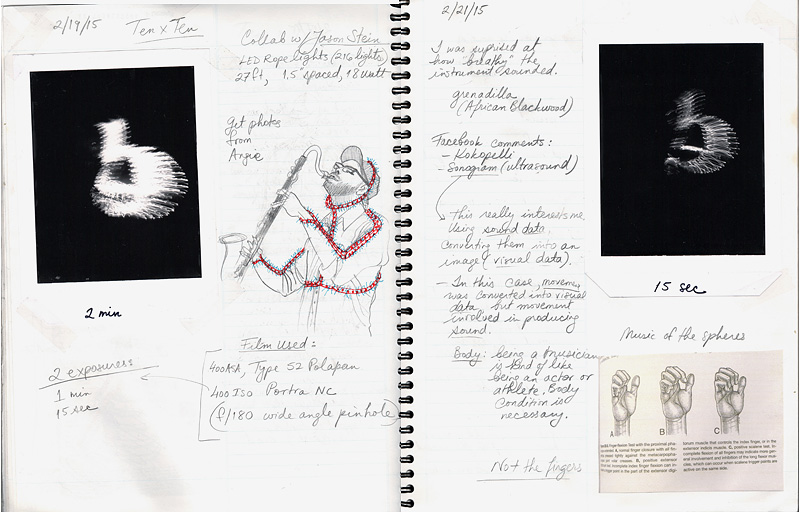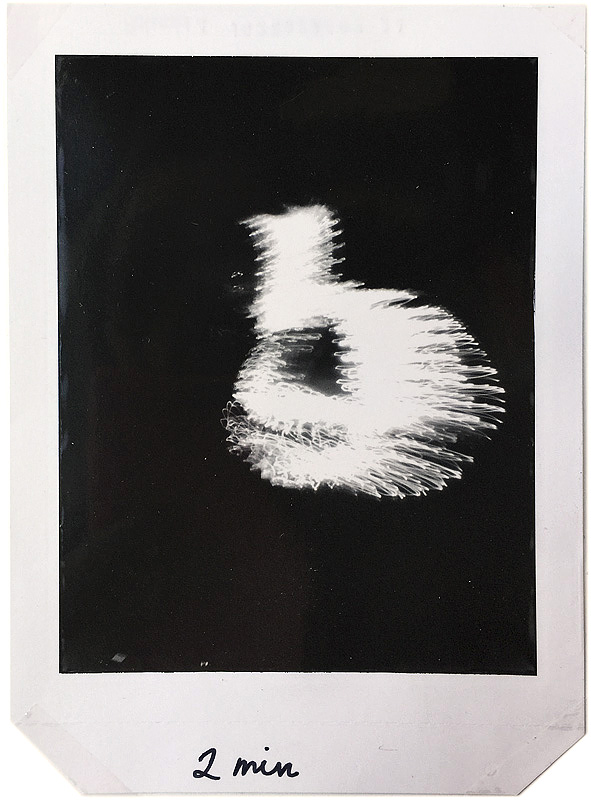
When I accepted the invitation to Ten x Ten, I had no idea how I would eventually engage the given theme. The organizers invited me to participate because my work ostensibly contained an element of improvisation (spilled ink??). I found this so surprising and strange that I had to say yes; I’ve always understood my own process to be overly exacting and methodical… The ink is only my way of coping with that.
Ten x Ten is a collaboration between ten pairs of musicians and artists, organized by Homeroom, Spudnik Press, and Elastic Arts in Chicago. This year’s theme is improvisation – pairing jazz musicians with visual artists who primarily work on paper. The project will culminate in September with recorded music and an edition of prints. For me this came on the heels of Basilica Chymica, another recent collaboration involving visual artists, chefs, and printmaking. The two projects were completely unaffiliated yet they entered my life within a year of each other. I have to wonder what about my work or career led me down this particular path.
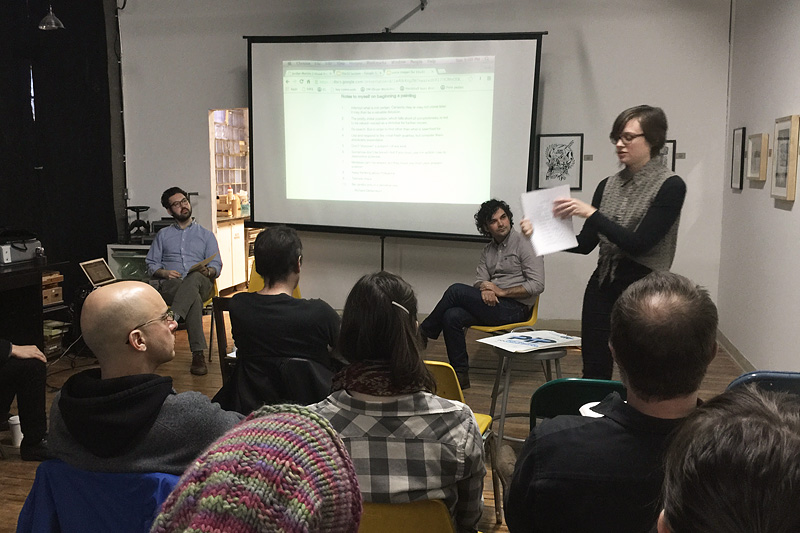
At our first Ten x Ten meeting, which was open to the public, I found out that the visual component was going to be limited to a 3-color serigraph on 18”x18” paper. These limitations somehow provided me with relief. During this event I also found out who my collaborator-musician was going to be, but he was absent due to a tour. I couldn’t start working on anything unless my focus was going to be on his absence/haunting, so I thought it best to wait. Our first live performance event was scheduled on February 19th, only 10 days ahead at Constellation, a well-known music venue in Chicago. For the visual artists, this was going to include a digital camera pointed down at a tabletop surface in the center of the room, projecting our improvisations via live video feed onto a large screen above the stage.
I had never done performance work before, and I didn’t at all expect to have a live audience for the visual aspect of the collaboration. If all else failed, plan B was to spill ink on watercolor paper as I often do, but that just didn’t seem appropriate for this project. The reason why I create my inkblots in the first place is because there is nothing before them. I usually use them as a foundation or a starting point for my drawings when I am working alone, faced with a blank sheet of paper. However, in this case, there was already something to get me started. I wanted not just the image, but the process as well, to be informed by the course of the collaboration.
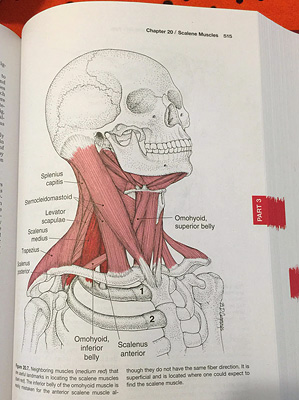
I finally met the musician, Jason Stein, only three days prior to our performance. With no expectations of the outcome and still no idea what we were going to do, we discussed our shared interests in the human body and how it relates to music. He mentioned the scalene “stress” muscles in the neck, and how the nerves that pass through them are linked to both breathing and finger movement: two important ways in which he manipulates his instrument, the bass clarinet. This led to a discussion of ways in which movement could be mapped – in particular regarding the fingers, arms, chest, neck, and head. I imagined a photograph: a long exposure that might record all of the movement into one image with trails of light marking important points on the body. This could involve bike lights, some sort of spelunking lights, Christmas lights… I was excited at the prospect of breaking out my old homemade 4×5 pinhole camera, an instrument that I spent years studying and absorbing during an earlier period in my life.
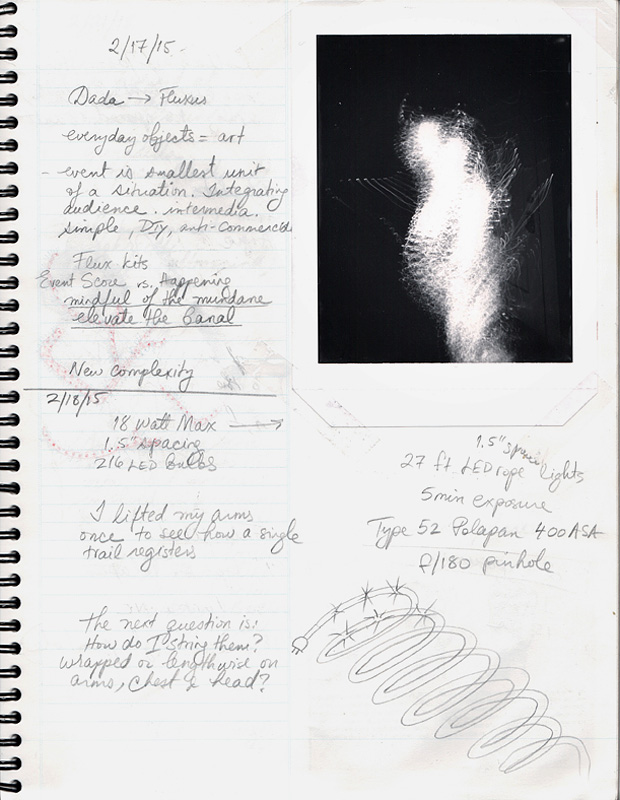
The day before the event, I discovered that I still had some 4×5 negative film in my refrigerator. A generous colleague also found a few sheets of large format Polaroid film that, to my shock, he happened to have lying around the office for over a decade. There was some consternation as to whether the film would work at all, considering that it contained a (decade expired) sensitive pod of chemicals needed for instant development. I hadn’t used my 545i back for this purpose since 2005 and I have no idea why I kept it, as it is not only heavy and clunky, but since the film for it hadn’t been manufactured for about 8 years, its only potential use may have been to prop a door open. That same evening, I picked up some rope lights at a local hardware store, wrapped them around myself, and swayed in front of my cardboard pinhole camera for 5min exposing a sheet of large format Polaroid. I was shocked to find that I instantly remembered how to use my Polaroid back. There was some sliding, switching, and pulling involved, and the way I immediately slipped into those movements as though I had performed them each day, all along, brought on a strange wistfulness. After 10 years of having the device put away, I summoned the neural pathways for this string of gestures and then sadly realized that after the event I was most likely never going to use them again.
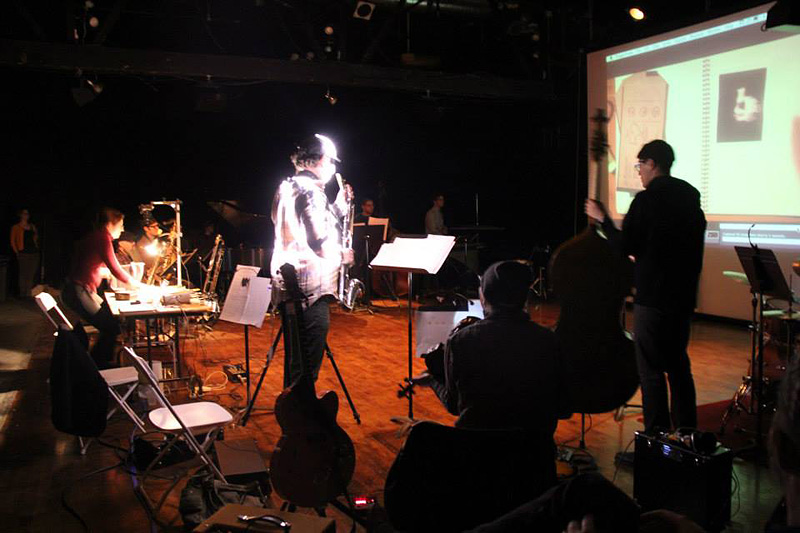
The Polaroid film was fine! Jason Stein composed a piece and asked several other participating musicians to play during our performance. The night of the event, we only had 15 minutes to wrap the lights, secure them in place with gaffer’s tape, and plug them in before our performance was slated to begin. There was some humor involved as the musicians waited for cues and couldn’t seem to take him seriously once he “lit up.” The results of the experiment were astonishing. I shot some negative color film as well, and I suspect that I’m going to enlarge it onto one of the silkscreens to include in the final print.
